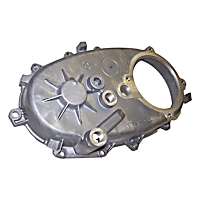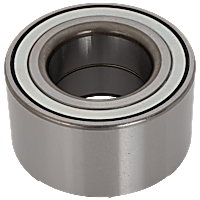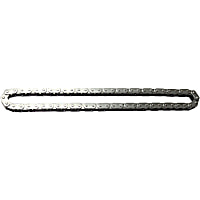The transfer case is one of the most important components that distinguish all-wheel drive (AWD) and four-wheel drive (4WD) vehicles. Driving all four wheels provides superior traction, resulting in improved performance in challenging terrain. This is made possible by the transfer case, which allows power to be transferred to both the front and rear wheels.
When you have a faulty transfer case, you’ll find that you may have difficulty or are unable to switch to AWD or 4WD.
In this article, we’ll discuss some of the symptoms you may experience when this component fails.

What are the Symptoms of a Bad Transfer Case?
The transfer case is supposed to last the life of the vehicle—but that doesn’t always happen. Here are some of the most common signs you may encounter when you have a bad transfer case:
Gear Shifting Issues
One symptom of a bad transfer case is when you have trouble shifting between gear ranges. Although the issue can be caused by something simple, such as a low fluid level or damaged linkage, it typically indicates an internal transfer case failure.
Before assuming something is wrong, however, make sure that you’re following the directions (in your owner’s manual) for operating the transfer case. In many instances, before shifting into four-low, the vehicle must be stopped and the transmission placed into neutral.
Otherwise, you’ll hear a grinding noise when trying to shift gears.
Note that while some transfer cases are controlled by the body computer, transfer cases on most modern vehicles are electrically-switched. As such, some vehicles may exhibit different symptoms.

Difficulty Staying in 4WD
Another common problem is a transfer case that pops out of 4WD. The issue can be attributed to outside influences (e.g., a problem with the differential or driveshaft) or it might be due to an internal transfer case concern.
4WD Will Not Engage/Disengage
There are many reasons why a vehicle’s 4WD system won’t engage or disengage. The issue could be due to anything from a faulty shift mechanism on the front axle to an electrical fault in the control system.
It’s also possible that the transfer case has internal problems.
Puddle Formation Directly Under the Transfer Case’s Location
There’s only one reason why there’s a greasy puddle building up underneath your car—there has to be a leak somewhere.
And that somewhere could be the transfer case.
Verify that the leak is coming from the transfer case by jacking up your car and visually inspecting it. You should easily see it at the rear-end part of the transmission or transaxle assembly.
If a leak is gradual (and they often are), you may not see a puddle, but over a period of time, the transfer case can become dangerously low on oil, leading to the destruction of internal components. This takes longer than a manual transmission to show up because transfer cases have an oil pump—manual transmissions typically don’t.
Weird Grinding, Growling or Humming Noises
Another telltale sign of a problem in your car is the presence of weird noises that weren’t there before. Abnormal noises can be bothersome, and they almost always indicate that bigger problems are right around the corner.
If you hear a grinding, growling, or humming noise that changes with vehicle speed, it might be coming from the transfer case. The root cause could be low fluid level or a mechanical problem, such as a loose chain, bad bearings, or damaged gears.
4WD Warning Light Illuminates
Some vehicles have a “service four-wheel-drive” message (or something similar) that pops up on the dash when there’s a problem in the system. Other vehicles will simply keep the 4WD light illuminated continuously to indicate a problem, which could be a bad transfer case.
What are the Possible Causes of a Bad Transfer Case?
Typically, a transfer case will fail due to a low fluid level (caused by leaks), lack of maintenance, or regular wear from use.
It’s important to address fluid leaks right away (as soon as you discover one) to prevent internal transfer case damage. Changing the transfer case fluid on a regular basis is also important. You can find the service interval for your vehicle’s transfer case in the owner’s manual.
Bad Transfer Case or Transmission Problem?
The transfer case is a part of your vehicle’s drivetrain, as is the transmission—and they both have their respective functions. Despite this, the symptoms of transmission failure can mimic those of a bad transfer case. This can sometimes result in confusion for vehicle owners who are attempting to fix their car themselves.
To avoid any confusion, it’s a good idea to have a professional diagnose your vehicle if you suspect a transfer case problem, as they would have the proper tools (and years of experience) to better assess your vehicle and its underlying issues.
Note that bad four-wheel-drive locking hubs can be construed as a transfer case problem as well and can, if they fail engaged, damage the front differential.
As an interesting side note, some older transfer case systems, such as on early 90s Fords, will, when they illuminate the “Low Range” indicator, cause the Powertrain Control Module to use a different shift schedule, causing it to shift through all its gears at very low speeds. The point is that something as simple as a blown fuse (killing power to the Low Range light) can cause this issue.
Some older transfer case systems, such as on early 90s Fords, will, when they illuminate the “Low Range” indicator, cause the Powertrain Control Module to use a different shift schedule, causing it to shift through all its gears at very low speeds.
–Richard McCuistian, ASE Certified Master Automobile Technician

Can Bad Transfer Case Damage the Transmission?
There are instances where a catastrophic transfer case failure can damage other parts of your vehicle, including the transmission. It’s always a good idea to address any known issues with your vehicle as soon as possible to avoid additional problems.
Some Ford Trucks had issues with their electronic modules that would randomly put the vehicle in four wheel drive at highway speed, causing tremendous destruction. There was a dealer program concerning this, so check your VIN at the Ford dealer to see if your vehicle is at risk.
What is a Transfer Case?
As previously mentioned, the transfer case is found on vehicles with AWD or 4WD capability and is integral in allowing drivers to switch to these modes of operation.
4WD Transfer Case
A typical 4WD transfer case is found at the rear of the transmission. It is powered by the transmission output shaft and operates much like a secondary transmission.
Most 4WD transfer cases have four modes of operation: two-high, neutral, four-low, and four-high. Because the driver only engages the 4WD when needed, this type of system is called “part-time” four-wheel drive.
The desired gear range may be engaged with a lever, engine vacuum, or onboard electronics.
AWD Transfer Case
AWD systems distribute power to all four wheels without any driver input. Many modern SUVs have AWD and a front-wheel drive-bias layout. Vehicles with this design have a transaxle instead of a transmission.
The transfer case mounts to the side of the transaxle and distributes power to the rear differential and one of the front CV axles. You may also hear people refer to this type of transfer case as a power transfer unit (PTU) or something similar.
These systems have what is called a “viscous coupling” in the system. Without it, full time four wheel drive wouldn’t be possible.
Think of how part time four-wheel drive requires all four tires to be exactly the same size and how the part time system will experience “driveline windup” if operated on a flat, dry surface with the four wheel drive engaged.
There are also some vehicles that have AWD and a rear-wheel drive-bias layout. With this design, the transfer case is much like one found in a 4WD vehicle. The primary difference is that the transfer case doesn’t have multiple gear ranges for the driver to choose from (operation is automatic).
That’s why this type of setup is sometimes referred to as full-time 4WD.
There are also electronically activated automatic four wheel drive systems that only engage when needed and cannot be controlled by the driver.
Where to Get a New Transfer Case for Your Vehicle
Driving around with a bad transfer case is a disaster waiting to happen. The transfer case plays a crucial role in your vehicle’s drivetrain system, and if it fails, it won’t be long before issues arise in your vehicle’s overall performance. This can make driving dangerous, so don’t put off replacing it. Fortunately, getting a new transfer case is a breeze with CarParts.com.
Use our vehicle selector to view replacement transfer cases that are compatible with your vehicle. Enjoy fast and reliable shipping, thanks to our on-hand products and strategically located warehouses across the US. Place your order today, and we’ll have it delivered to your doorstep in as fast as two business days.
Don’t wait for the worst-case scenario to unfold before replacing your faulty transfer case. Shop for a new transfer case from CarParts.com today.
Products Mentioned in this Guide
Any information provided on this Website is for informational purposes only and is not intended to replace consultation with a professional mechanic. The accuracy and timeliness of the information may change from the time of publication.



 Transfer Case
Transfer Case
 Wheel Bearing
Wheel Bearing
 Timing Chain
Timing Chain





























The 4×4 on my 2004 Fort Sport Trac stopped working correctly. The Ford dealership diagnosed it as the 4×4 shift motor, and they replaced it. However told me afterwards, that was not the problem and there’s something within the crankcase needing to be replaced. They stated it relates to gear teeth or such and that it’ll cost $900 for the used part, plus labor. I don’t trust my dealership (that’s for another story). What might they be speaking off, and, is my truck still roadworthy without the repair so long as I don’t use the 4×4?
Hello,
What symptoms is the 4×4 system exhibiting? Will it not go into 4-hi, 4-lo, or both?
Last time I used it, it seemed to engage the wheels in opposite directions and would reset in Reverse. The service tech said that, after replacing the shift motor, it made a popping noise and wouldn’t go into High. He then seemed to say it wouldn’t go into Low either stating he believes the entire transfer case needs replacement.
I have a 1993 Ford f-150 xl with the 5.0 and 5 speed manual transmission with 4×4 I can put it into 4 low but I put it into 2high or 4 high I can let off of the clutch which vehicle running and shift through all five gears without using the clutch pedal and not grind a gear or stall out can you help me I just relplaced clutch clutch plate flywheel and master culinder and line and slave cylinder
Hello,
Does the vehicle move under its own power when in two-wheel or four-wheel high?
So all of a sudden a terrible grinding sound and rolled to a stop. Goes into gear but doesn’t move. Put it in 4×4 then able to move. Still terrible sound tho. Would that be transfer case? Help! I’m literally stuck on side of the road!
Hello,
What is the year, make, and model of the vehicle? Are the rear driveshaft and rear differential intact?
Yes they are. Broken at the baring in the middle of driveshaft. 1997 tacoma
It sounds like you found the problem, then. The center support bearing is a common failure item on Tacomas like yours.
2015 jeep renegade limited. The other morning strated it a the serv 4wds light is on and have and no problems before this. 137,000 miles I’m the only one that has owned this jeep. What could be and where do I start?
My 1994 jeep grand Cherokee 4×4 keep jumping into neutral.